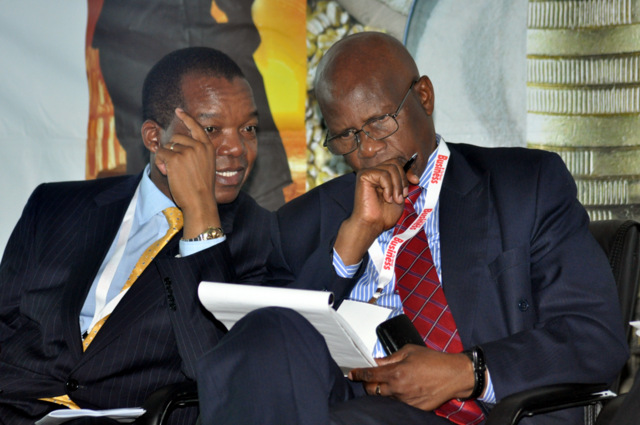Overview of the RBZ monetary policy
By Joseph Sagwati
Coming from a background where news deficit to spur the economy is abound, the pronouncements made by the Reserve Bank of Zimbabwe (RBZ) governor John Mangudya acted as the required dossier for the beginning of the year.

The governor assumed a multi variate function away from being the central interpretive of monetary policy to being a fair-minded functionary tinged with a lot of common sense.
Aside from the somewhat repetitive figure work and tabulations, the governor managed to navigate into a statement that overall, can be said to be positive for the economy.
The usual downside for the governor has been the inability to command the printing press and subsequently the erosion of the lender of last resort function for him to be in control of the monetary policy aggregates namely money supply and interest rates.
This has left the local banking establishment at the whims and caprices of world currency gyrations with serious financial risk exposure. The acknowledgement of the existence of distressed banks in the form of Metbank, AfrAsia and Tetrad and the subsequent intensification of monitoring is a good start.
These banks have experienced significant erosion of liquidity now threatening their operational solvency. Suggestively though including those that are still under curatorship the banding up of the three into one large banking unit that can be saved sounds better.
The revival of the lender of last resort through the recapitalisation of the RBZ (US$100 million) and Afreximbank guaranteed financing of US$200 million is a positive development. The major challenge in the current banking dispensation is the intervention of the RBZ on players whose daily balances do not balance.
This intervention will smoothen settlements for most banks and create the riposte to allow for lesser endowed banks to be liquid. The major challenge will be for the so-called small banks mustering the required security as collateral for them to access this funding.
Notable interventions on non-performing loans (NPLs) will go a long way in infusing liquidity in the financial sector. The Zimbabwe Asset Management Company is expected to assume a significant chunk of this banking albatross with already US$65 million having been acquired.
Going forward, the competency levels in the company will be a critical success factor.
It would have been effective if we had a personality from structured finance or debt instruments to hastily package the NPLs into instruments that can be sold.
The contentious move to demonetise the Zimbabwe dollar by offering a US$5 payment to previous Zimbabwe dollar denominated accounts is a mockery. The accounts being referred to here were to an extent holding entire livelihoods of corporate and individuals before they were sequestrated. The amount being offered is woefully small.
The US$20 million kitty to address this could easily be treated as an investment fund which can be played around with on behalf of the beneficiaries with a view to grow it.
A real estate development could be beneficial.
The RBZ interventions in gold boosting production measures are commendable with enhanced financing to Fidelity Printers (US$50 million). This Accelerated Gold Production Initiative is to increase gold production per year by 2020.
The attempt to increase coal production at Hwange Colliery through equipment purchase is necessary to enable the company to be able to supply the coal needed for the generation of electricity by the Zimbabwe Power Company.
With an attempt to beneficiate local platinum through a refinery, a lot of revenue yielding efforts by the bank will see revenue retention in the country. In an act of pure philanthropy, the RBZ aims to create a funding conundrum for distressed companies in the manufacturing sector.
This will see a resuscitation of a fully funded Distressed Industries and Marginalised Areas Fund to cater for the medium finance requirements of the manufacturing sector. This is a commendable move since most of the companies in this category are the ones that have received significant battering from imports and porous borders.
What is not clear is the size of the fund and implementation intricacies as past similar attempts fell victim to pillaging leaving deserving companies unattended. With improved tapping of the Diaspora remittances through structured financial products, a fully functional diaspora market can help stimulate cash inflows.
This should not be left out to the Homelink utility as the diaspora market has grown to be wide and large with remittances coming from all corners of the world. Buttressed by the reincarnation of the Export Credit Guarantee Corporation, a significant export growth impetus will be revived.
In a pure act of moral suasion the bank should advocate for the continued use of bond coins to neutralise price pressures and advise employers against labour cost increases as this will build an untenable price vortex for businesses.
Given an inclement international operating environment characterised by plummeting oil prices, revived quantitative easing in Europe and geopolitical gyrations in Ukraine and Nigeria, the idea was to create some internal functional dynamism that was not wholly soiled by outside events.
This explains the more liberal approach to the Zimbabwe financing question.
Source: Financial Gazette






